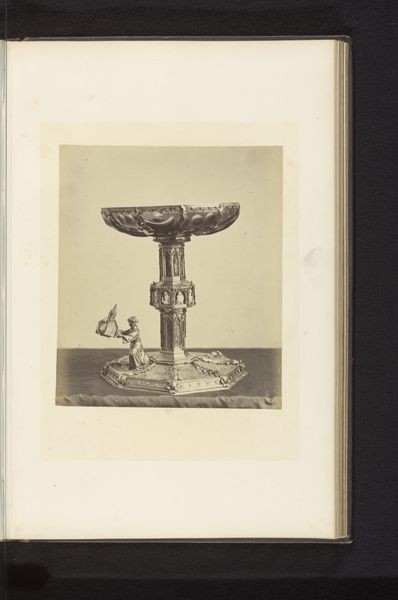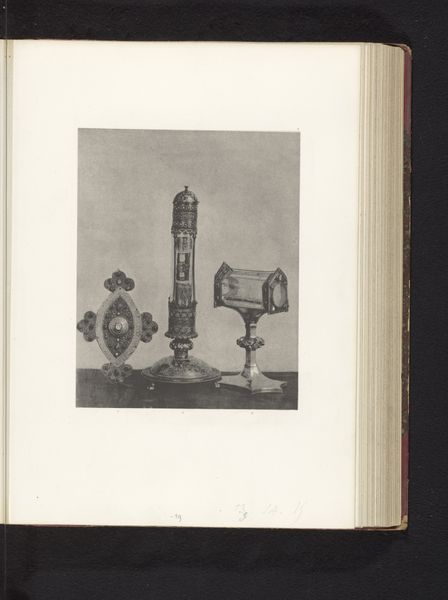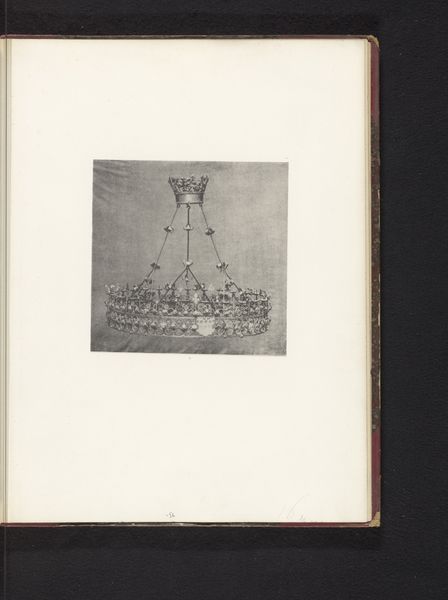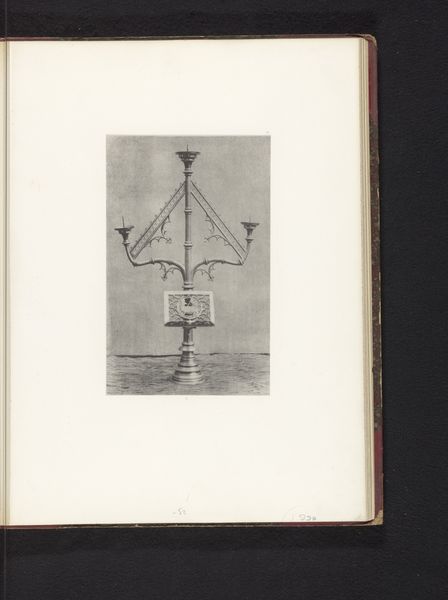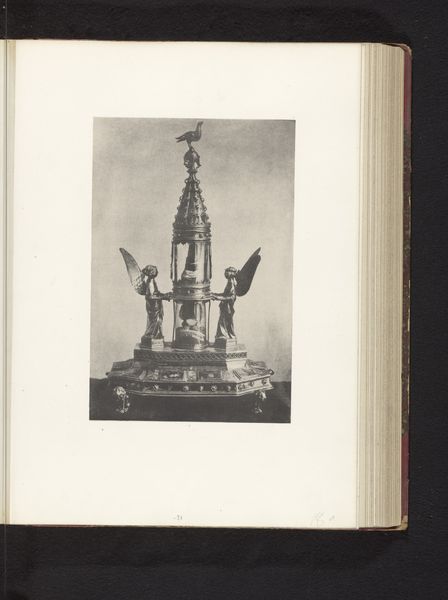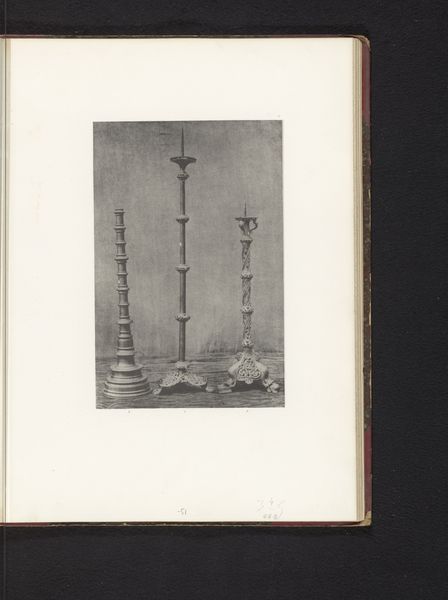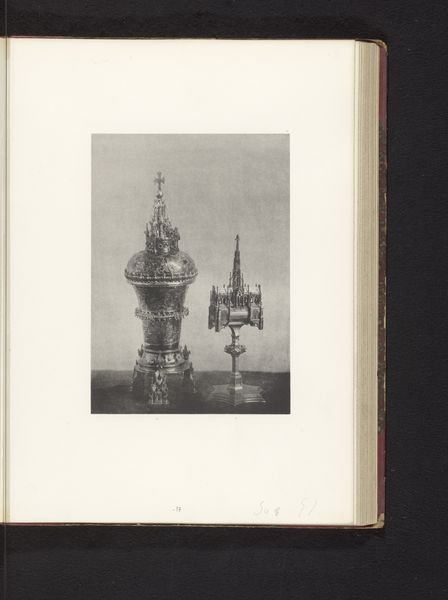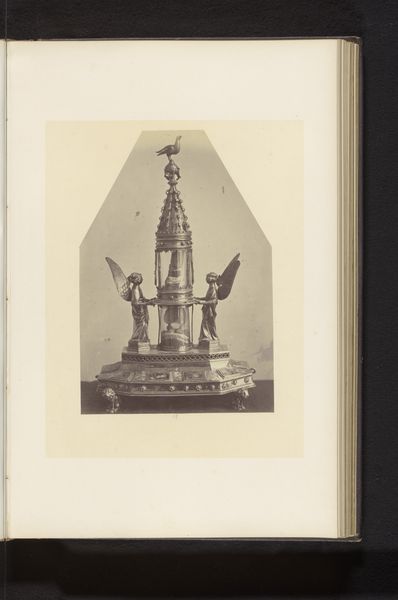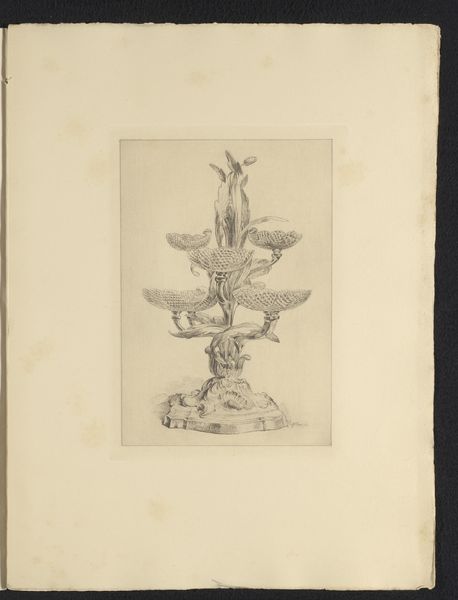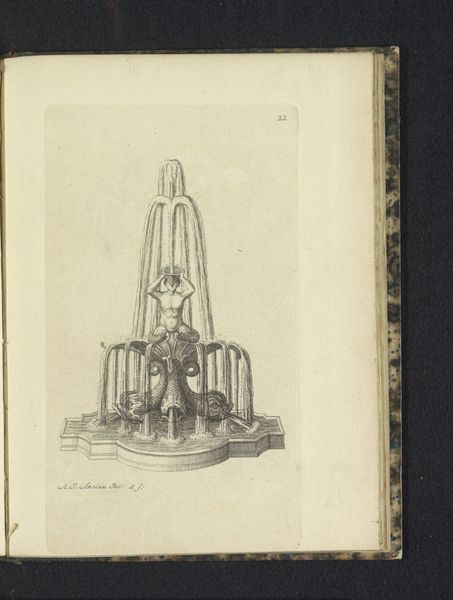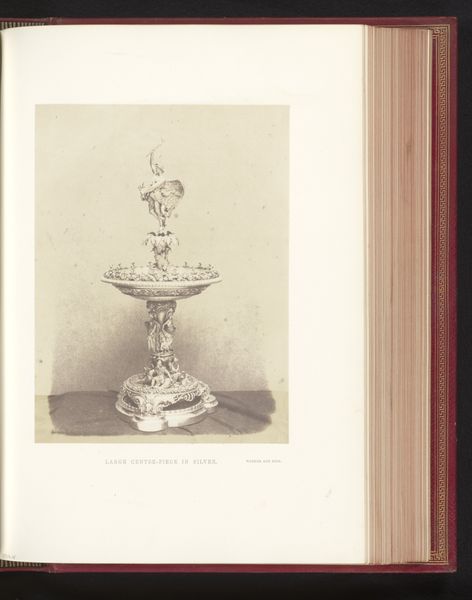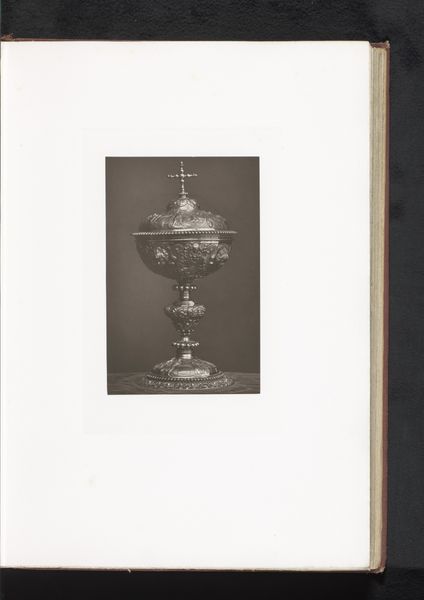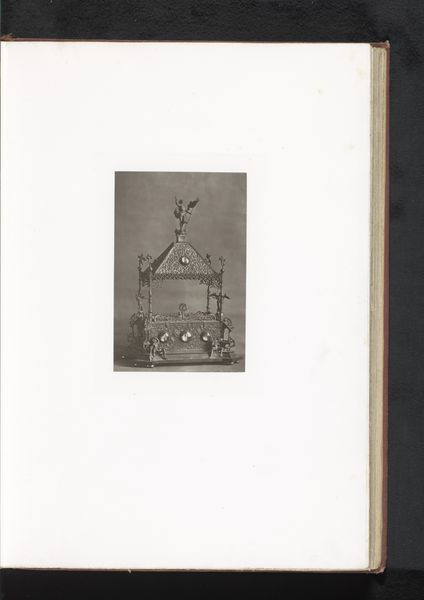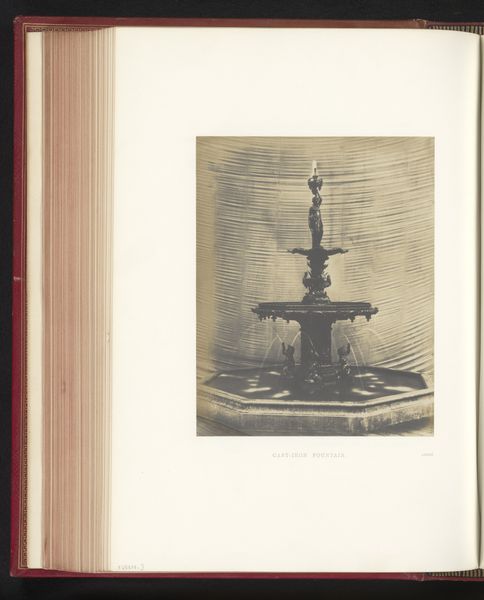
Kelk van glas en metaal ter ere van de heilige Gertrudis uit de Sint-Gertrudiskerk in Nijvel, opgesteld op een tentoonstelling over religieuze objecten uit de middeleeuwen en renaissance in 1864 in Mechelen before 1866
0:00
0:00
metal, sculpture
#
medieval
#
metal
#
sculpture
Dimensions: height 246 mm, width 181 mm
Copyright: Rijks Museum: Open Domain
Editor: This photograph, taken before 1866, depicts a medieval glass and metal kelk, or chalice, dedicated to Saint Gertrude. It's credited to Joseph Maes and showcases its exhibition in Mechelen in 1864. There's something deeply reverent about its stillness; it feels like witnessing a piece of history brought into the light again. How would you interpret its significance, particularly in a public exhibition? Curator: This photograph highlights the 19th-century's fascination with retrieving and displaying medieval religious artifacts for public consumption. What does it say about how religious relics were transitioned from sacred, functional objects to secular, aesthetic displays for broader audiences? Consider the politics inherent in "rescuing" objects from their original context and placing them in museums or exhibitions. Editor: It seems like the act of display shifts the meaning entirely. From something actively used in religious practice to a static symbol. Curator: Precisely. It raises the question: what social and cultural narratives were constructed through these curated displays? For example, the Kelk’s association with Saint Gertrude connects it to a specific history and localized devotion, but exhibited within the framework of a broader medieval collection, its narrative potential is re-oriented and potentially diluted, would you agree? Editor: That makes a lot of sense. Thinking about the exhibit, it's not just about seeing a beautiful object; it’s about seeing how we choose to remember—or perhaps re-imagine—history. I hadn't considered the power dynamic involved in deciding what's worthy of display and what gets left behind. Curator: Indeed. This image reminds us that museums and exhibitions aren't neutral spaces, but active participants in shaping cultural memory. What's more, the choice to photograph this item and include it in a catalogue extends its public life.
Comments
No comments
Be the first to comment and join the conversation on the ultimate creative platform.
